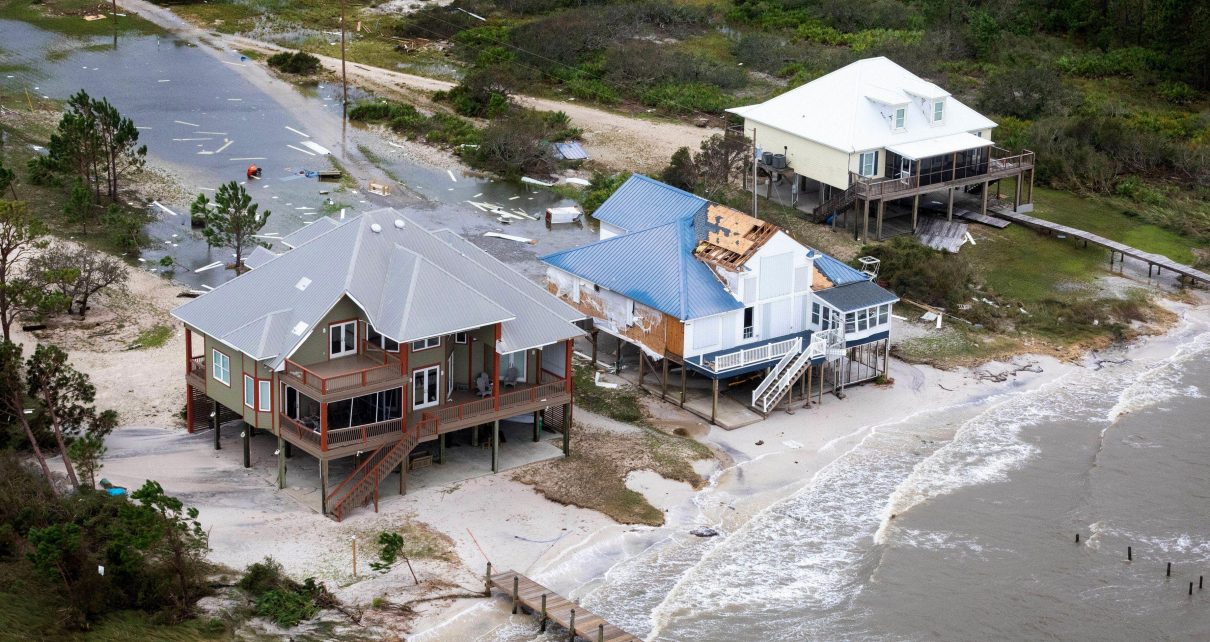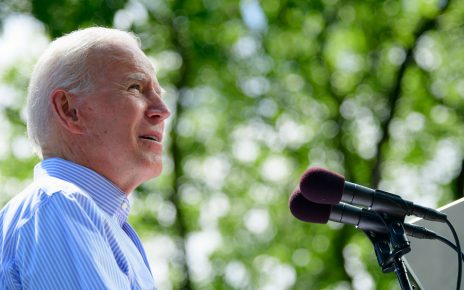When Hurricane Sally blew through coastal Alabama last month, the owners of about 16,000 homes there had a reason to breathe a little easier.
Their roofs were probably going to be OK.
Alabama’s two Gulf Coast counties—Mobile and Baldwin—are the nation’s leading adopters of a nationally recognized building standard meant to keep storms from ripping rooftops from houses, far outpacing other states, including others in Hurricane Alley.
The design standard, called “Fortified,” was developed by the Insurance Institute for Building & Home Safety in 2012 and has been adopted by homeowners form the Carolinas to Texas. But it is law in much of south Alabama, a region that has traditionally resisted beachfront building codes.
Roy Wright, president and chief executive officer of IBHS, said he’s seen Fortified houses withstand even Category 5 winds, most recently in the Panhandle, where Hurricane Michael destroyed the community of Mexico Beach in 2018.
“The difference with Sally in Alabama is we’re able to see a clear checkerboard pattern of houses that experienced a loss and versus those that did not,” he said.
It’s no coincidence in south Alabama, which has seen rapid growth over the past decade and today is Alabama’s second-largest metro area, with 652,000 people. The region also remains the state’s most vulnerable to natural disasters. Six named hurricanes have swept the Alabama coast since 1995.
A rare thing: Residents embracing building codes
Fifteen local zoning boards in Baldwin County—from Bay Minette in the north to Gulf Shores and Orange Beach—now require new and reconstructed homes to meet the basic Fortified requirements.
Basic certification requires that a home’s roof be able to withstand 130-mph winds using relatively simple materials and building techniques.
First, a home’s roof deck must be secured using ring-shank nails that embed deeply and securely into plywood, and the seams between roof deck sections must be sealed before shingles are installed. Eaves and soffits also must be designed and built to reduce the risk of high wind tearing apart the roof deck and frame.
The cost of retrofitting an existing roof can range from $700 to $2,000, officials said, while building a new roof costs between $10,000 and $15,000.
“It’s not a small amount, but when you look at the various systems that go into a home, it’s a doable proposition for a lot of people,” said Wright.
The game-changer in Alabama, however, is that homeowners can apply for state grants of up to $10,000 to help defray the costs of retrofitting a home to meet the higher standard. The program was established by the state Legislature in 2011 and is managed by the Alabama Department of Insurance.
Brian Powell, founding director of the Strengthen Alabama Homes program, said the grant program was launched in 2012 to help homeowners build back stronger and safer after hurricanes. The program receives roughly $10 million per year from the Alabama Legislature, derived from taxes and fees paid by insurance companies working in the state. The program receives no money from the state’s general fund, he said.
Powell said beginning with Hurricane Ivan in 2004, private insurers stopped writing wind policies in south Alabama due to repetitive loss claims. Those with insurance paid exorbitant premiums, leading some to drop their insurance altogether.
“It was meant to reduce the risk of loss and encourage insurance companies to come back and write [policies] on the coast,” Powell said of Strengthen Alabama Homes. “They did come back, and as we proved the mitigation piece worked, local municipalities started coming on board” by incorporating Fortified home requirements into local building codes.
‘We are spending every penny’
The program issues roughly 1,000 grants annually, and revenue is growing as insurers continue to supplement the fund with about $10 million per year. Those same insurers are also writing more policies in the region and discounting premiums on wind coverage for homes with fortified roofs, Powell said.
Property owners have been banging on the door in ever-larger numbers as the program becomes more widely known. “This program is in such high demand that we have a backlog of applicants that we’re turning away,” Powell said. “We are spending every penny.”
Ricardo Alvarez, founder and president of Mitigat.com Inc., a private consulting firm in Miami focused on vulnerability assessments and hazard mitigation, said the Fortified program’s success is built upon extensive research and testing at the IBHS Research Center in South Carolina, giving municipalities more confidence about incorporating it into building codes.
But, he said, rising risk from hurricanes and other extreme climate events should push more states and municipalities to adopt and enforce Fortified standards, including inland regions at high risk from tornadoes and wind storms.
“In most areas, Fortified is a voluntary standard; it’s not required—and that’s one of the big problems,” Alvarez said. “It takes a program like Alabama’s where they provide incentives for homeowners to do these kinds of things.”
Wright said IBHS and partners like Smart Home America, an Alabama-based nonprofit working to expand the program, are bringing the Fortified standard to other coastal states like Mississippi, Texas and even Florida, which has some of the strongest building codes in the nation but still lacks a highest-bar standard in some areas.
“Northwest Florida needs this,” Wright said. “There is voluntary implementation of it in some areas, and there was an uptick after [Hurricane] Michael” in 2018. “But we know what can happen in these storms, and we know how to build in a way that homes can withstand 130-mph winds,” he said.
“Sally was the first grand test of this approach,” he added, “And from what we can tell, Fortified delivered on its promises.”
Reprinted from Climatewire with permission from E&E News. E&E provides daily coverage of essential energy and environmental news at www.eenews.net.




